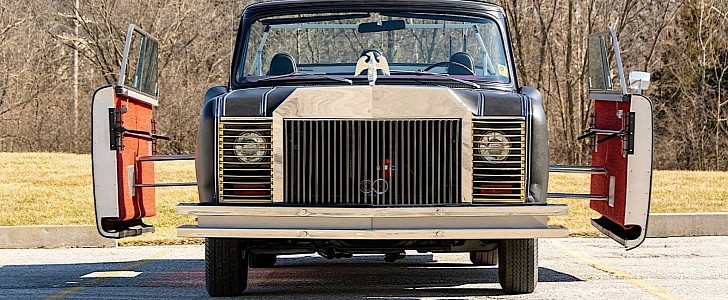Hunters are a special breed of people. One has to be in a very special mindset to kill another living creature for sports and wrap the whole thing in a coating of style, courage, and elegance.
Such human activities require special hardware to be deployed, and by that, we don’t necessarily mean weapons. Vehicles are an important part of a hunter’s life, especially those used for hunting big game on the African plains.
There are several machines hunters like to use for such endeavors, most of them based on existing civilian vehicles, meaning we all heard of them before. But not the thing we have here, aptly called SafariKar.
The contraption is the invention of a man named Bruce Mohs, an inventor/entrepreneur who passed away in 2015. His mark on the automotive scene is not that great, but he did make a first brief impression in the late 1960s by designing a truck-based sedan called Ostentatienne Opera.
Some time later, in 1972, he came up with the idea of the SafariKar, a machine that could easily be used for both sightseeing in the wild and going after big game in dangerous parts of the world.
The man created a squarish, borderline Rolls-Royce-ish body, fitted with doors that slide out and away to open, and slapped it on the underpinning of an International Harvester Travelall station wagon.
The thing looks luxurious, and it was supposed to. Mohs was going for something that was never really tried before in this segment, a high-end and safe vehicle that could have been used with equal success both on the road and off the beaten path, chasing living creatures.
The car was supposed to come with bucket seats, CB radios, air conditioning, and, upon request, even a television set.
The only problem was the vehicle's engine. Mohs went for a 392ci (6.4-liter) V8 paired with an automatic transmission, but the setup allegedly had problems meeting the EPA requirements of the time. That meant the SafariKar never moved past the prototype stage.
Three of them are said to have been made, including the 1973 example we have here. It is listed for sale on Bring a Trailer, and the highest bid at the time of writing, with four days left in the process, is $33,333.
This example was restored over four years starting in 2009, and we’re told it is the recipient of several awards, including at the AACA National and Grand National.
There are several machines hunters like to use for such endeavors, most of them based on existing civilian vehicles, meaning we all heard of them before. But not the thing we have here, aptly called SafariKar.
The contraption is the invention of a man named Bruce Mohs, an inventor/entrepreneur who passed away in 2015. His mark on the automotive scene is not that great, but he did make a first brief impression in the late 1960s by designing a truck-based sedan called Ostentatienne Opera.
Some time later, in 1972, he came up with the idea of the SafariKar, a machine that could easily be used for both sightseeing in the wild and going after big game in dangerous parts of the world.
The man created a squarish, borderline Rolls-Royce-ish body, fitted with doors that slide out and away to open, and slapped it on the underpinning of an International Harvester Travelall station wagon.
The thing looks luxurious, and it was supposed to. Mohs was going for something that was never really tried before in this segment, a high-end and safe vehicle that could have been used with equal success both on the road and off the beaten path, chasing living creatures.
The car was supposed to come with bucket seats, CB radios, air conditioning, and, upon request, even a television set.
The only problem was the vehicle's engine. Mohs went for a 392ci (6.4-liter) V8 paired with an automatic transmission, but the setup allegedly had problems meeting the EPA requirements of the time. That meant the SafariKar never moved past the prototype stage.
Three of them are said to have been made, including the 1973 example we have here. It is listed for sale on Bring a Trailer, and the highest bid at the time of writing, with four days left in the process, is $33,333.
This example was restored over four years starting in 2009, and we’re told it is the recipient of several awards, including at the AACA National and Grand National.
















